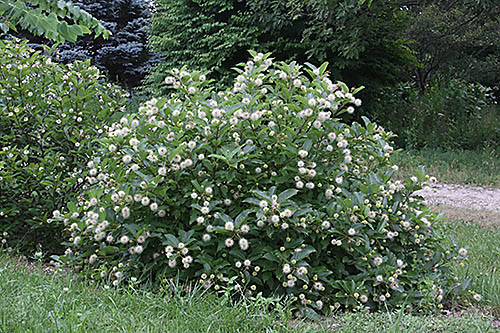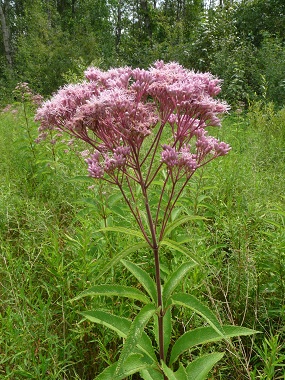 Lake life gives nature lovers a unique setting to not only enhance their home gardens for wildlife, but also their shoreline. I grew up on the shores of Lake Murray in the ‘80s and ‘90s. As the lake became developed more people would clear the shoreline of vegetation, as well as any debris or cover, such as fallen trees. As the shoreline became clear of vegetation and cover, it became almost completely devoid of the turtles and snakes I used to enjoy seeing and sometimes catching as a child. However, as people begin to notice the steep decline in much of our wildlife, especially our birds and pollinators, some are beginning to regenerate their shorelines, slowly but surely, with natives. Plants like buttonbush and swamp rose mallow are amazing shoreline plants for pollinators because they provide nectar to adult insects as well as food for moths and butterflies when they are in their larval caterpillar stage. And when you think of caterpillars, think of all the birds that will want to visit your property. Imagine the gorgeous male common yellowthroat, a small warbler that is common along shorelines with the right habitat, flitting through the shores of South Carolina lakes again!
Lake life gives nature lovers a unique setting to not only enhance their home gardens for wildlife, but also their shoreline. I grew up on the shores of Lake Murray in the ‘80s and ‘90s. As the lake became developed more people would clear the shoreline of vegetation, as well as any debris or cover, such as fallen trees. As the shoreline became clear of vegetation and cover, it became almost completely devoid of the turtles and snakes I used to enjoy seeing and sometimes catching as a child. However, as people begin to notice the steep decline in much of our wildlife, especially our birds and pollinators, some are beginning to regenerate their shorelines, slowly but surely, with natives. Plants like buttonbush and swamp rose mallow are amazing shoreline plants for pollinators because they provide nectar to adult insects as well as food for moths and butterflies when they are in their larval caterpillar stage. And when you think of caterpillars, think of all the birds that will want to visit your property. Imagine the gorgeous male common yellowthroat, a small warbler that is common along shorelines with the right habitat, flitting through the shores of South Carolina lakes again!
So how can you attract these birds, caterpillars, and other wildlife to your yard? Their needs are no different than ours. Food, shelter, and water is a necessity for any animal that wishes to survive, and you can easily provide all three on your property. Many people think the only way to provide wildlife food is by offering seeds and suet at your bird feeders. Although this is a nice way to supplement a bird’s diet during the winter months, birds trying to raise a family in the spring and summer months need a more nutritious, fatty, and protein rich food.
 Even in the winter a Carolina chickadee’s diet consists of approximately 50% insects. If your goal is attracting more birds and more wildlife in general, consider installing native plants which will support more beneficial insects, aka bird food. Insects have evolved with our local native plants and have developed the physical adaptations to digest the chemical components within leaves. A tree doesn’t wish to have its leaves eaten so the chemicals within them are there to protect it. However, through evolution and adaptation, many of our native insects, including the larvae (caterpillars) of moths and butterflies are able to feed upon many of the plants we see in and around our area. Those caterpillars and other insects are packed with the fat and nutrients wildlife needs to produce strong eggs and raise healthy offspring. Our native oak trees are insect factories, and are hosts to hundreds of different kinds of caterpillars. Among many others, plants like goldenrod, aster, native sunflowers, and Joe Pye weed also produce plenty of caterpillars by providing the leaves caterpillars have evolved to digest.
Even in the winter a Carolina chickadee’s diet consists of approximately 50% insects. If your goal is attracting more birds and more wildlife in general, consider installing native plants which will support more beneficial insects, aka bird food. Insects have evolved with our local native plants and have developed the physical adaptations to digest the chemical components within leaves. A tree doesn’t wish to have its leaves eaten so the chemicals within them are there to protect it. However, through evolution and adaptation, many of our native insects, including the larvae (caterpillars) of moths and butterflies are able to feed upon many of the plants we see in and around our area. Those caterpillars and other insects are packed with the fat and nutrients wildlife needs to produce strong eggs and raise healthy offspring. Our native oak trees are insect factories, and are hosts to hundreds of different kinds of caterpillars. Among many others, plants like goldenrod, aster, native sunflowers, and Joe Pye weed also produce plenty of caterpillars by providing the leaves caterpillars have evolved to digest.
A place to raise young is also needed, which is easier than you may think. An easy way to offer a home is to install bird boxes in many locations around your property. Screech owls, Eastern bluebirds, tufted titmouse, and many other species rely on these nest boxes as many of their natural tree cavities have been removed from the local ecosystem. A place to raise young can also include thickets, hedge rows, and brush, rock, and log piles, all of which are easy to install on one’s property. And finally, wildlife needs water. Those of you lucky enough to live on the lake have no problem with this one, but the solution is easy if you’re like me, and do not live on the shoreline. All that is needed is a bird bath, which can either be elaborate and expensive, or an inexpensive shallow dish, such as a trash can lid. And to make your bird bath even more attractive to birds, consider installing a “bubbler” which will add motion and sound to your water.
Once these three components are provided, your property and garden will become a magnet for many local and migratory bird species, reptiles, mammals, and amphibians. To find native plants in your area simply find the nurseries that sell them. A list of South Carolina nurseries that sell natives are on the South Carolina Wildlife Federation’s website. You can also find online nurseries that sell natives. Wherever you get your plants from, just make sure they are natives that evolved in your area. Doing this ensures the wildlife in and around your property will have an abundant and nutritious food source for years to come.
Please contact Jay Keck, Habitat Education Manager, South Carolina Wildlife Federation with any questions.
